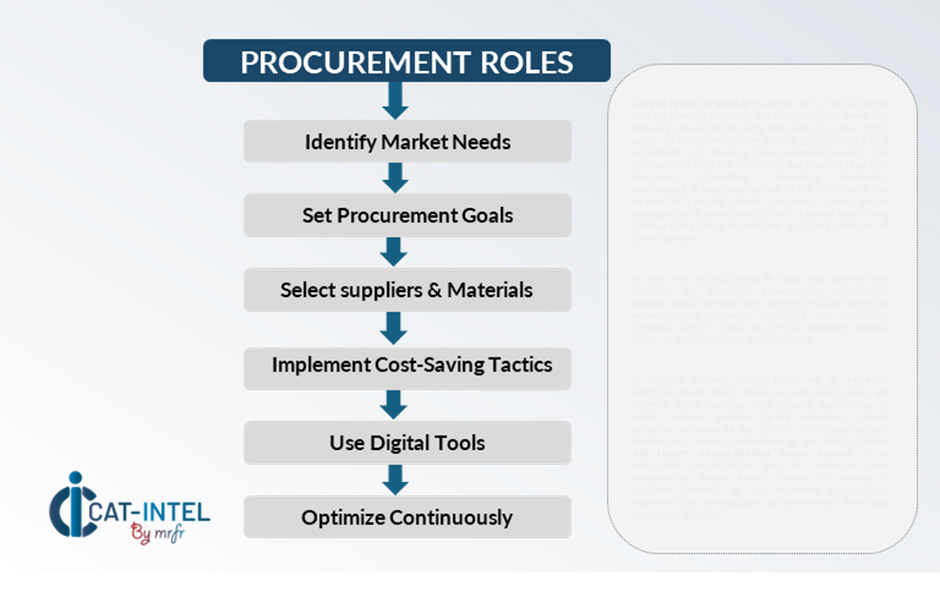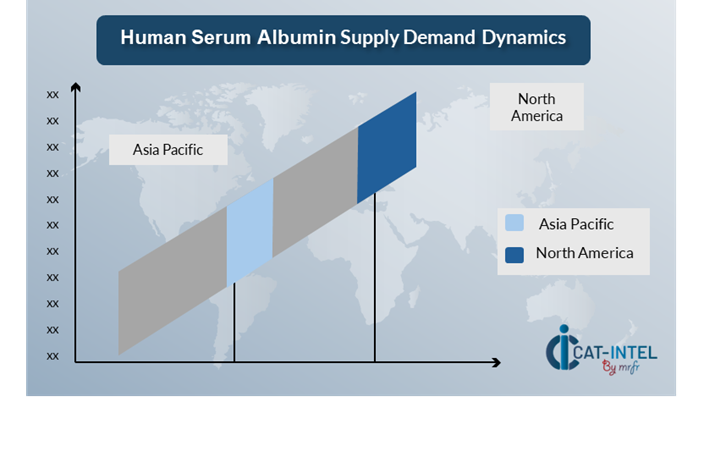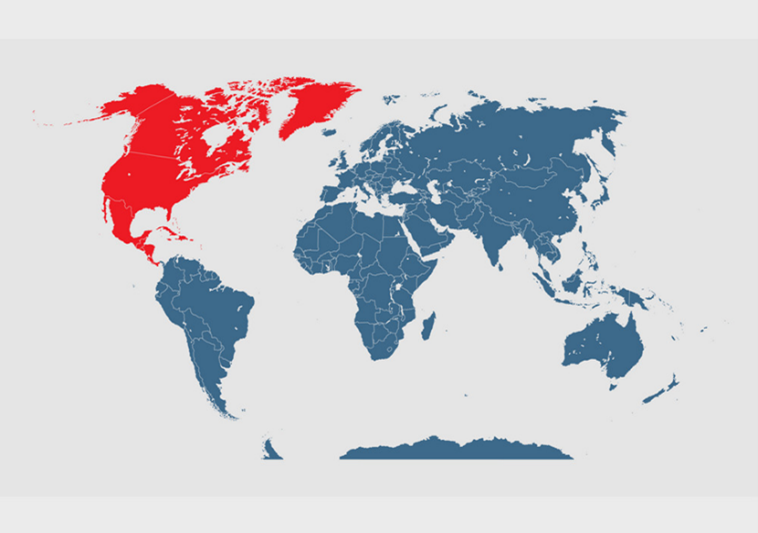Summary Overview
Human Serum Albumin Market Overview:
The global human serum albumin (HSA) market is steadily growing, driven by rising demand in industries such as healthcare, biotechnology, and pharmaceuticals. This market comprises numerous types of albumins, such as plasma-derived and recombinant human serum albumin (rHSA). Our investigation takes a close look at procurement patterns, highlighting cost-cutting initiatives and the use of modern biotechnological technologies to improve albumin manufacturing and therapeutic applications.
Key prospective difficulties in the human serum albumin market include controlling production costs, guaranteeing scalability of manufacturing methods, maintaining high quality control standards, and meeting the growing demand for HSA in therapies for liver illnesses, burns, and hypoalbuminemia. As global demand continues to expand, organizations are embracing innovative production technologies and market analytics to improve operational efficiency, streamline production, and mitigate risks, ensuring long-term sustainability and competitiveness in the market.
Market Size: The global Human Serum Albumin market is projected to reach USD 13.80 billion by 2035, growing at a CAGR of approximately 8.73% from 2025 to 2035.

-
Sector Contributions: Growth in the market is driven by: -
Manufacturing and Supply Chain Optimization: Real-time data and efficient integration of procedures are crucial for optimizing human serum albumin (HSA) manufacturing and supply chains.
-
Healthcare and Biotechnology Growth: High demand for HSA in therapeutic applications such as liver illness, burns, and hypoalbuminemia has led to increased adoption of improved production processes.
-
Technological Transformation: The HSA market is being transformed by advancements in biotechnology, automation, and artificial intelligence (AI) to improve production processes and efficiency.
-
Innovations: Recombinant human serum albumin (rHSA) is a cost-effective and environmentally friendly alternative to plasma-derived HSA.
-
Investment Initiatives: The global HSA market is investing in innovative production technologies like recombinant techniques and digital platforms to improve procurement and distribution procedures.
-
Regional Insights: North America and Asia Pacific are leading the growth of the HSA market due to their strong healthcare systems, digital infrastructure, and adoption of modern production processes.
Key Trends and Sustainability Outlook:
-
Cloud Integration: Cloud integration is gaining popularity in HSA production due to its scalability, cost efficiency, and increased data access.
-
Advanced Features: The integration of AI, IoT, and blockchain technologies in the HSA market enhances decision-making, automation, and transparency.
-
Focus on Sustainability: HSA manufacturers are implementing sustainable practices, including using renewable resources for recombinant albumin manufacturing and improved resource management.
-
Customization Trends: The growing need for industry-specific HSA solutions designed for healthcare, research, and biotechnology applications is forcing manufacturers to develop unique production methods. -
Data-Driven Insights: Advanced analytics help manufacturers optimize HSA production, precisely estimate demand, manage inventory, and track metrics for performance in real-time.
Growth Drivers:
-
Digital Transformation: The implementation of digital technologies in healthcare and biotechnology is fuelling the growth of the human serum albumin market.
-
Demand for Process Automation: Businesses are increasingly relying on automated production processes to eliminate operational bottlenecks, including for human serum albumin.
-
Scalability Needs: Manufacturers need scalable solutions that can grow with the market. This involves investing in flexible production systems to react to changing demands and ensure the availability of HSA for a global customer base.
-
Regulatory Compliance: HSA manufacturers use digital technologies and automated processes to assure correct reporting, traceability, and safety and quality requirements.
-
Globalization: Increased need for HSA solutions that meet international laws, including multi-country production and cross-border supply chain management.
Overview of Market Intelligence Services for the Human Serum Albumin Market:
Recent evaluations of the human serum albumin (HSA) industry have identified important obstacles, including high production costs and the need for scalable, customized solutions. Market intelligence studies give practical information that assist businesses in identifying cost-cutting methods, optimizing supplier management, and improving the effectiveness of their procurement and production strategies. These insights enable compliance with industry standards, ensuring that the manufacture of HSA meets regulatory safety requirements while managing costs effectively.
Procurement Intelligence for Human Serum Albumin: Category Management and Strategic Sourcing
To remain competitive in the human serum albumin market, organizations are streamlining their procurement processes by analysing spend and tracking supplier performance. Effective category administration and strategic sourcing are critical for lowering production costs while maintaining a steady supply of high-quality HSA. Companies can improve their procurement processes by using actionable market intelligence to source the best raw materials, optimize relations with suppliers, and negotiate advantageous rates for their HSA production requirements.

Pricing Outlook for Human Serum Albumin: Spend Analysis
The pricing prognosis for human serum albumin (HSA) is projected to remain moderately shifting, with possible fluctuations caused by a variety of causes. Advancements in recombinant production technology, increased demand for HSA in medical treatments, and the need for personalization in HSA-based therapies are all significant factors. Furthermore, the growing focus on safety, regulatory compliance, and quality control in the healthcare industry is exerting upward pressure on HSA pricing.
Graph shows general upward trend pricing for Human Serum Albumin and growing demand. However, there may be fluctuations influenced by economic conditions, technological advancements, and competitive dynamic.

Efforts to streamline procurement processes, improve supplier management, and implement efficient manufacturing methods are critical for cost control in the HSA industry. Leveraging digital tools for market information, price forecasting, and analytics can help you save even more money. By regularly monitoring the market, producers can uncover cost-cutting opportunities while still ensuring a steady, superior supply of HAS.
As the demand for HSA grows, investing in scalable, cloud-based production and distribution platforms will be critical to controlling costs, enhancing supply chain efficiency, and ensuring global accessibility.Despite these obstacles, maintaining an emphasis on scalability, establishing robust production techniques, and using modern manufacturing technologies will be crucial to maintaining cost-effectiveness and operational proficiency in the human serum albumin market.
Cost Breakdown for Human Serum Albumin: Total Cost of Ownership (TCO) and Cost-Saving Opportunities

- Raw Materials: (40%)
-
Description: This cost comprises charges for collecting human plasma and producing recombinant human serum albumin (rHSA) using biotechnological technologies.
-
Trend: While plasma-derived HSA remains dominant, there is a shift towards cost-effective recombinant techniques to lessen reliance on human plasma.
- Manufacturing and Production: (XX%)
- Regulatory and Compliance: (XX%)
- Distribution and Logistics: (XX%)
Cost-Saving Opportunities: Negotiation Levers and Purchasing Negotiation Strategies
In the human serum albumin (HSA) industry, streamlining procurement processes and using strategic bargaining methods can result in significant cost savings and increased operational efficiency. Long-term collaborations with HSA suppliers, particularly those who provide recombinant human serum albumin (rHSA) and other novel solutions, might result in more attractive price structures and terms, such as volume discounts and bundled service packages. Long-term contracts allow businesses to cut expenses and slow price increases.
Partnering with suppliers who prioritize innovation, such as those using recombinant protein manufacturing or advanced purification processes, can provide access to cutting-edge technology while lowering long-term operational expenses. Furthermore, these vendors are frequently better prepared to respond to regulatory changes and industry innovations. Implementing digital technologies for procurement improves transparency, minimizes over-provisioning, and optimizes HSA usage.

Supply and Demand Overview for Human Serum Albumin: Demand-Supply Dynamics and Buyer Intelligence for Effective Supplier Relationship Management (SRM)
The human serum albumin (HSA) market is steadily expanding, driven by rising demand in industries such as healthcare, biotechnology, and pharmaceuticals. This increase is impacted by several supply and demand factors, including technical breakthroughs, industry-specific requirements, and global economic situations.
Demand Factors:
-
Healthcare and Biotech Advancements: Human serum albumin is in high demand due to the growing need for effective therapies in areas including liver disease, burns, and hypoalbuminemia.
-
Shift Towards Recombinant Albumin Production: The manufacture of recombinant human serum albumin (rHSA) is becoming increasingly popular due to its cost-effectiveness, reduced reliance on plasma donations, and increased scalability.
-
Industry-Specific Therapeutic Needs: Healthcare industries require HSA systems that fulfil regulatory standards and support complicated workflows, including application in medical devices.
-
Integration with Medical Technologies: HSA systems that interact with other healthcare technology are in high demand, promoting adoption and improving workflow efficiency.
Supply Factors:
-
Technological Advancements: Technological advancements in HSA synthesis, including recombinant DNA, protein purification, and biomanufacturing, are increasing efficiency and cost-effectiveness.
-
Supplier Ecosystem: The expanding number of HSA producers, including large biopharmaceutical corporations and specialty manufacturers, provides purchasers with a varied choice of possibilities.
-
Global Economic Factors: Economic factors, including labour costs, exchange rates, and regional technology uptake, impact HSA pricing and availability.
-
Scalability and Flexibility in Manufacturing: Modern: HSA manufacturing systems are scalable and versatile, meeting the needs of a diverse range of customers, including large hospitals and niche markets therapeutic applications.
Regional Demand-Supply Outlook: Human Serum Albumin
The Image shows growing demand for Human Serum Albumin in both North America and Asia Pacific, with potential price increases and increased Competition.

North America: Dominance in the Human Serum Albumin Software Market
North America, particularly the United States, is a dominant force in the global Human Serum Albumin market due to several key factors:
-
Advanced Healthcare Infrastructure: The existence of well-known healthcare practitioners, hospitals, and medical institutions drives up demand for HSA products used in critical care situations, such as burns, liver disorders, and hypoalbuminemia.
-
Strong Demand for Therapeutic Applications: The rising prevalence of chronic diseases such liver cirrhosis, cancer, and renal problems, which necessitate treatment by HSA, significantly boosts the demand for HSA in North America.
-
Strong Regulatory Environment: North America's markets are extensively regulated, particularly by agencies such as the United States Food and Drug Administration (FDA) and Health Canada.
-
Leading Biopharmaceutical Companies: North America is home to numerous significant biopharmaceutical and biotechnology businesses that are leaders in research and development as well as recombinant HSA product manufacture, ensuring that the region remains at the forefront of HSA supply and innovation. -
Technological Advancement: North America is a pioneer in biotechnological innovation, particularly in the invention of recombinant human serum albumin (rHSA), which minimizes dependency on human plasma while providing more cost-effective, scalable production methods.
North America Remains a key hub Human Serum Albumin Price Drivers Innovation and Growth.

Supplier Landscape: Supplier Negotiations and Strategies
The human serum albumin (HSA) market has a diversified and competitive supplier landscape, with both global biopharmaceutical companies and specialist regional producers influencing the dynamics. These vendors have a significant impact on pricing patterns, production processes, regulatory compliance, and product availability. Well-established biopharmaceutical businesses dominate the market, offering a diverse range of HSA products, while smaller, specialized players specialize in recombinant HSA synthesis or specific therapeutic applications that include liver disease therapies or burns care.
Major HSA providers have complete product portfolios, including plasma-derived and recombinant human serum albumin. Smaller, specialist vendors frequently rely on advanced manufacturing technologies, such as recombinant DNA techniques or biotechnological breakthroughs, to produce high-purity or custom-formulated HSA products for specific medical applications. As healthcare demand rises, suppliers are creating HSA solutions that are suited to the unique needs of various therapeutic areas, such as liver illness, burns, or hypoalbuminemia. The emphasis on industry-specific requirements allows these suppliers to remain competitive by solving unique obstacles in each market.
Key Suppliers in the Human Serum Albumin Market Include:
- Baxter International
- CSL Behring
- Grifols
- Octapharma
- Kedrion Biopharma
- Biotest AG
- Shanghai RAAS Blood Products Co. Ltd.
- Hualan Biological Engineering Inc.
- LFB
- Nihon Pharmaceutical Co. Ltd.

Key Developments Procurement Category Significant Development:
Significant Development |
Description |
Market Growth |
Biopharmaceutical businesses are increasing production to match this rising demand, particularly in emerging countries where healthcare access and technology are quickly improving. |
Cloud Adoption |
The use of cloud-based systems allows businesses to optimize supply chains, improve inventory management, and increase data exchange, resulting in more access to HSA medicines in remote or underserved areas. |
Product Innovation |
The incorporation of biotechnological developments such as gene editing and recombinant DNA technology has resulted in considerable increases in output purity, efficiency, and cost-effectiveness in HSA manufacturing. |
Technological Advancements |
Artificial intelligence and machine learning are being used to streamline industrial processes, forecast demand, and improve quality control. Furthermore, robotic process automation (RPA) streamlines production workflows and improves efficiency in large-scale HSA manufacture. |
Global Trade Dynamics |
Tariff changes, import/export rules, and regional policies all have an impact on how HSA items are priced and distributed. Global trade fluctuations also have an impact on raw material availability, such as plasma for human serum albumin manufacturing, which could cause supply chain issues in specific countries. |
Customization Trends |
There is an increasing demand for industry-specific HSA formulations that address the therapeutic needs of various medical diseases. This trend underscores the growing demand for more individualized therapies, with HSA solutions targeted to specific diseases or patient populations. |
Human Serum Albumin Attribute/Metric |
Details |
Market Sizing |
The global Human Serum Albumin market is projected to reach USD 13.80 billion by 2035, growing at a CAGR of approximately 8.73% from 2025 to 2035.
|
Human Serum Albumin Technology Adoption Rate |
Approximately 60% of biopharmaceutical companies worldwide have implemented advanced recombinant production technology for HSA manufacture, with an emphasis on improving purity and scalability. |
Top Human Serum Albumin Industry Strategies for 2025 |
Key strategies include increasing recombinant HSA production, investing in new purification processes, growing production capacity, and ensuring regulatory compliance. |
Human Serum Albumin Process Automation |
To boost productivity and decrease human error, over 50% of HSA production processes automate routine operations like as protein purification, quality control, and packing. |
Human Serum Albumin Process Challenges |
Major problems include high production costs, raw material procurement issues, regulatory hurdles, and maintaining consistent product quality.
|
Key Suppliers |
Leading HSA producers include Baxter International, CSL Behring, and Grifols, who provide plasma-derived and recombinant HSA solutions across sectors. |
Key Regions Covered |
North America, Europe, and Asia-Pacific are major markets for HSAs, with hospitals, biotech businesses, and research organizations driving demand. |
Market Drivers and Trends |
Growth is being driven by rising demand for HSA-based treatments for liver illness, burns, and hypoalbuminemia, as well as advances in recombinant HSA technology and worldwide healthcare expansion. |

